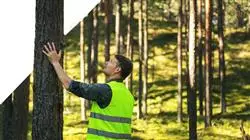University certificate
The world's largest faculty of humanities”
Why study at TECH?
A Postgraduate certificate with which you will ensure the promotion of education as an indispensablev factor in Human and Sustainable Development"

Education for Human and Sustainable Development is a critical component of international cooperation. It enables local communities to understand the challenges and objectives of projects and action programs, promoting the adoption of sustainable practices and fostering the creation of fairer and more equitable societies.
Without the presence of the educational factor, initiatives in International Development Cooperation tend to be less effective and sustainable in the long term, which is why it is crucial to promote it. Humanities professionals will be able to do this with the greatest guarantees thanks to this refresher course, which will enable them to lead these processes by mastering the most advanced strategies.
For this reason, students will first delve into the modalities and instruments of International Cooperation for Development, and then explore the challenges presented by Education in the field of Sustainable Development. In this sense, the foundations for social transformation will be established, as well as the methods of pragmatic evaluation.
With this extensive specialization, the student will be in a position to boost their professional career, which should not be sacrificed at any time during the academic development thanks to its online nature. In fact, leading experts in Education for Human and Sustainable Development will provide the most innovative content on the Virtual Campus.
It should be noted that the program will include detailed Masterclasses given by prestigious International Guest Directors.
Renowned International Guest Directors will offer a series of innovative Masterclasses to address the latest trends in Education for Human and Sustainable Development”
This Postgraduate certificate in Education for Human and Sustainable Development contains the most complete and up-to-date program on the market. The most important features include:
- The development of case studies presented by experts in Education for Human and Sustainable Development.
- The graphic, schematic, and practical contents with which they are created, provide practical information on the disciplines that are essential for professional practice
- Practical exercises where self-assessment can be used to improve learning
- Its special emphasis on innovative methodologies
- Theoretical lessons, questions to the expert, debate forums on controversial topics, and individual reflection assignments
- Content that is accessible from any fixed or portable device with an Internet connection
You will define the main instruments and modalities of International Cooperation for Development based on the most updated contents"
The program’s teaching staff includes professionals from the field who contribute their work experience to this educational program, as well as renowned specialists from leading societies and prestigious universities.
The multimedia content, developed with the latest educational technology, will provide the professional with situated and contextual learning, i.e., a simulated environment that will provide immersive education programmed to learn in real situations.
This program is designed around Problem-Based Learning, whereby the professional must try to solve the different professional practice situations that arise during the course. For this purpose, students will be assisted by an innovative interactive video system created by renowned experts.
In only 360 hours and with prestigious experts at your disposal, you will master the most advanced concepts on economic, social and sustainable growth"

You will delve into each and every one of the keys to Sustainable Development in accordance with the 2030 Agenda of the United Nations"
Syllabus
Humanities professionals place high expectations on programs that address Education for Human and Sustainable Development. TECH Global University is aware of this, which is why, in collaboration with the experts on the teaching staff, it has designed this syllabus with a focus on the practicality and usefulness of each of the concepts on the curriculum. In this line, all the elements that students will study in depth will be very present throughout their professional career once they finish the Postgraduate Certificate.

Enroll now to become part of a global community on Education for Human and Sustainable Development that will be of great value in your professional career"
Module 1. International Development Cooperation
1.1. International Development Cooperation
1.1.1. Introduction
1.1.2. What Is International Development Cooperation?
1.1.3. Objectives and Purpose of International Development Cooperation
1.1.4. Goals of the Spanish International Development Cooperation BORRAR
1.1.5. Evolution of the Spanish International Development Cooperation BORRAR
1.1.6. Origins and Historical Evolution of International Cooperation
1.1.7. Europe's Reconstruction Plans in the Bipolar Conflict
1.1.8. The Processes of Decolonization in the Postwar Years
1.1.9. Crisis of the International Development Cooperation
1.1.10.Changes in the Conception of International Development Cooperation
1.1.11.Bibliography
1.2. Modalities and Instruments of International Development Cooperation
1.2.1. Introduction
1.2.2. Main Tools of International Development Cooperation
1.2.2.1. Development Cooperation
1.2.2.2. Development Education
1.2.2.3. Technical Assistance, Training and Research
1.2.2.4. Humanitarian Action
1.2.3. Other Cooperation Tools
1.2.3.1. Economic Cooperation
1.2.3.2. Financial Help
1.2.3.3. Scientific and Technological Cooperation
1.2.3.4. Food Aid
1.2.4. Modalities of the International Development Cooperation
1.2.5. Types of Modalities
1.2.5.1. Modality According to the Origin of the Funds
1.2.6. Types of Aid According to the Stakeholders Channelling International Development Cooperation Funds
1.2.6.1. Bilateral
1.2.6.2. Multilateral
1.2.6.3. Decentralized Cooperation
1.2.6.4. Non-Governmental Cooperation
1.2.6.5. Business Cooperation
1.2.7. According to the Geopolitical Situation and Level of Development of Donor and Recipient Countries
1.2.8. According to the Existence or Non-Existence of Limitations on the Application of Funds
1.2.9. Other Cooperation Tools Co-Development
1.2.9.1. Co-Development Interventions
1.2.10. Bibliography
1.3. Multilateral Organizations
1.3.1. The International Development Cooperation System
1.3.2. International Development Cooperation Stakeholders
1.3.3. Stakeholders in the Official Development Assistance System
1.3.4. Definitions of Relevant International Organizations (IOs)
1.3.5. Characteristics of International Organizations
1.3.5.1. Types of International Organizations
1.3.6. Advantages of Multilateral Cooperation
1.3.7. Contributions of International Organizations to the Multilateral System
1.3.8. Multilateral Financial Institutions (MFIs)
1.3.8.1. Characteristics of MFIs
1.3.8.2. Composition of MFIs
1.3.8.3. Types of MFIs
1.3.9. Bibliography
1.4. Sources of International Development Cooperation
1.4.1. Introduction
1.4.2. Difference between Governmental and Non-Governmental Cooperation
1.4.3. Multilateral Financial Institutions
1.4.4. The International Monetary Fund
1.4.5. United States Agency for International Development USAID
1.4.5.1. Who Are They?
1.4.5.2. The History of USAID
1.4.5.3. Intervention Sectors
1.4.6. The European Union
1.4.6.1. Objectives of the EU
1.4.6.2. General Objectives of EU External Action
1.4.7. Non-Financial Multilateral Institutions
1.4.7.1. List of Non-Financial Multilateral Institutions
1.4.7.2. Actions of Multilateral Institutions
1.4.7.3. Non-Financial
1.4.8. United Nations Organization
1.4.9. Bibliography
1.5. Spanish Cooperation Master Plan 2018-2021 BORRAR
1.5.1. Introduction
1.5.2. Action and Management Challenges for Spanish Cooperation
1.5.3. What Is a Master Plan?
1.5.3.1. Spanish Cooperation Master Plan
1.5.3.2. Areas Composing the Fifth Spanish Cooperation Master Plan
1.5.4. Goals of the Master Plan
1.5.4.1. Goals of the Fifth Master Plan of the Spanish Cooperation
1.5.5. Geographic Priorities for Action under the Master Plan of the Spanish Cooperation
1.5.6. The 2030 Agenda
1.5.6.1. What Is Agenda 2030?
1.5.6.2. Development of Agenda 2030
1.5.6.3. General Specifications
1.5.6.4. Implementation of Agenda 2030
1.5.7. Bibliography
1.6. Humanitarian Action
1.6.1. Introduction
1.6.2. Humanitarian Aid in the International Context
1.6.3. Tendencies in Humanitarian Action
1.6.4. Main Goals of Humanitarian Action
1.6.5. First Strategy for Humanitarian Action in Spanish Cooperation BORRAR
1.6.6. AECID and Humanitarian Action BORRAR
1.6.7. The Financing of Humanitarian Action and Its Evolution
1.6.8. Principles of International Human Rights Law and Humanitarian Action
1.6.9. Summary
1.6.10 Bibliography
1.7. Gender Approach in International Development Cooperation
1.7.1. Introduction
1.7.2. What Is the Gender Approach?
1.7.3. Why Is It Important to Incorporate the Gender Approach in Development Processes?
1.7.4. Gender Approaches in International Development Cooperation
1.7.5. Strategic Lines of Work on the Gender Approach in International Development Cooperation
1.7.6. Objectives of the Fifth Master Plan for Spanish Cooperation Regarding the Promotion of Men's and Women's Rights and Opportunities BORRAR
1.7.7. Priority Equality Goals in International Development Cooperation
1.7.8. Sectoral Gender Strategy in Spanish Development Cooperation BORRAR
1.7.9. Gender Mainstreaming Guide
1.7.10. Bibliography
1.8. Focus on Human Rights in International Development Cooperation
1.8.1. Introduction
1.8.2. Human Rights
1.8.3. Human Rights Approach to Development Cooperation
1.8.4. How the Human Rights Approach Emerged
1.8.5. Elements that the Human Rights Approach Contributes to the International Development Cooperation
1.8.5.1. New Frame of Reference: International Human Rights Standards. 1.8.5.2. New Look at Capacity Building
1.8.5.3. Participation in Public Policy
1.8.5.4. Accountability
1.8.6. Challenges of the Human Rights Approach in Development Cooperation Interventions
1.8.7. Challenges in Project Identification and Formulation
1.8.8. Challenges in Project Execution
1.8.9. Challenges in Project Monitoring and Assessment
1.8.10 Bibliography
1.9. Human Mobility and Migration
1.9.1. Introduction
1.9.2. Migration
1.9.2.1. First Human Movements
1.9.2.2. Types of Migrations
1.9.2.3. Causes of Migrations
1.9.3. Migratory Processes in the Era of Globalization
1.9.3.1. Improved Living Conditions
1.9.3.2. Vulnerability and Migration
1.9.4. Human Safety and Conflict
1.9.5. Challenges of the International Asylum System
1.9.6. The OHCHR
1.9.7. Human Rights Based Migration Strategy
1.9.8. Bibliography
Module 2. Education for Human and Sustainable Development
2.1. Education for Human and Sustainable Development
2.1.1. Introduction
2.1.2. Economic, Social and Sustainable Growth
2.1.3. Sustainable Development, Sustainability and Education
2.1.4. Education on Sustainable Development and Education for Sustainable Development
2.1.4.1. Main Differences
2.1.4.2. Sustainability
2.1.4.3. Sustainable Development
2.1.5. Education for Sustainable Development (ESD)
2.1.6. Bibliography
2.2. Development Education and Its Evolution
2.2.1. Introduction
2.2.2. Development Education Goals
2.2.2.1. Purpose of Development Education Activities
2.2.2.2. Purpose of Development Education
2.2.3. Dimensions of Development Education
2.2.4. The History of Development Education
2.2.5. Redirect Education
2.2.6. Guidelines for Sustainable Development
2.2.7. Exercises to Introduce the Concept of Sustainable Development
2.2.7.1. Take Everything Today or Everyone Always Takes Something I
2.2.7.2. Take Everything Today or Everyone Always Takes Something II
2.2.7.3. Observations on the Game: Take Everything Today or Everyone Always Takes Something
2.2.8. Bibliography
2.3. Development Education Intervention Strategies
2.3.1. Formal, Non-Formal and Informal Education
2.3.2. Redirect Education
2.3.3. Issues in Education for Sustainable Development
2.3.4. Guidelines for Sustainable Development
2.3.5. Problems
2.3.6. Framework for Teaching or Discussing Environmental Issues
2.3.7. Skills
2.3.8. Perspectives
2.3.9. Bibliography
2.4. Challenges of Development Education in Spain and in the World BORRAR
2.4.1. Introduction
2.4.2. Components of ESD (Education for Sustainable Development)
2.4.2.1. Values
2.4.3. Challenges and Barriers for ESD
2.4.3.1. Challenges Faced by ESD
2.4.4. Bibliography
2.5. Education, Participation and Social Transformation
2.5.1. Introduction
2.5.1.1. The Administration During Change
2.5.2. Process to Generate Change
2.5.2.1. Make the Decision to Act
2.5.2.2. Support Your Decision with a Reason
2.5.2.3. Prepare a Communication Strategy to Share Your Vision with Stakeholders and the Community
2.5.2.4. Prepare Final and Intermediate Goals
2.5.2.5. Establish Programmatic Assessment Methods and Responsibilities
2.5.2.6. Review and Revise Final and Interim Goals
2.5.2.7. Rewards and Celebrations
2.5.3. Exercises to Create Community Sustainability Goals through Public Participation
2.5.3.1. Know Your Neighbors
2.5.3.2. Generate Consensus
2.5.3.3. Your Community through a Sustainability Lens
2.5.4. Bibliography
2.6. Stakeholders of Development Education
2.6.1. Introduction
2.6.2. Stakeholders: General State Administration BORRAR
2.6.3. Actors BORRAR Ministry of Foreign Affairs and Cooperation: BORRAR Secretary of State for International Cooperation and Ibero-America and the Caribbean (SSICIAC) BORRAR
2.6.4. Stakeholders: BORRAR Ministry of Education and Science BORRAR
2.6.5. Other Ministries: BORRAR
2.6.6. Cooperation Council
2.6.7. NGDO
2.6.8. Stakeholders: BORRAR Coordination of Non-Governmental Development Organizations of Spain (CONGDE) BORRAR
2.6.9. Stakeholders: In Europe
2.6.10.Other Stakeholders
2.6.10.1. Media
2.6.10.2. Networks, Associations and Social Movements
2.6.11. Actors: Universities
2.6.12.. Bibliography
2.7. Education for Development in the Formal, Non-Formal and Informal Spheres
2.7.1. Redirecting Existing Education
2.7.1.1. Points to Consider
2.7.1.2. Education as a Great Hope for a Sustainable Future
2.7.2. The Story of Professor Mafalda
2.7.2.1. Context
2.7.2.2. Structure
2.7.2.3. Attributes of Global Citizenship
2.7.2.4. Practical Recommendations According to Some Determining Factors
2.7.3. Bibliography
2.8. Comparative Development Education Strategy of Cooperation
2.8.1. Introduction
2.8.2. Concept of Non-Formal Education
2.8.3. Development Education Activities in Non-Formal Education
2.8.4. Informal Education
2.8.5. Areas in Informal Education
2.8.5.1. Media
2.8.5.2. Advocacy Awareness Campaigns
2.8.5.3. Studies, Research and Publications
2.8.5.4. Internet and Social Networks
2.8.6. Recommendations
2.8.7. Bibliography
2.9. Education for Development. Action Areas According to the Cooperation Master Plan
2.9.1. Introduction
2.9.2. Education Strategy for the Development of the Fifth Master Plan of the Spanish Cooperation BORRAR
2.9.3. Objectives of the Master Plan for Development Education
2.9.4. Sectoral Strategies of the Master Plan for Development Education
2.9.4.1. PAS
2.9.4.2. Strategies
2.9.5. AECID's Strategic Lines for Development Education
2.9.6. Generation of Global Citizenship on Social Networks
2.9.7. Bibliography
2.10. Development Education Projects Worldwide
2.10.1. Introduction
2.10.2. Social Economy "Zafra Local" of the NGDO , Páramo Movement, Cooperation and Development
2.10.2.1. What Is This Project Based On?
2.10.2.2. Project Objectives
2.10.2.3. Local Currency as the Backbone of the Project
2.10.2.4. Examples in Spain BORRAR
2.10.2.5. Examples in Europe
2.10.2.6. Two Formats
2.10.2.7. Currency to Support Local Commerce
2.10.2.8. Currency to Favor Local Commerce
2.10.2.9. Solidarity Currency
2.10.2.10. Fair Currency
2.10.2.11. Participatory Process
2.10.3. Bibliography

You will acquire in-depth knowledge of the best strategies to reorient existing educational actions in order to achieve Sustainable Development"
Postgraduate Certificate in Education for Human and Sustainable Development
Education for human and sustainable development is a pedagogical approach that seeks to train individuals who are capable of contributing to the sustainable development of society. Through education, it seeks to promote a critical and reflective awareness of social, economic and environmental problems, in order to build a more just and sustainable world. Under this premise, TECH Global University presents its Postgraduate Certificate in Education for Human and Sustainable Development, a detailed look at the multiplicity of schemes that take place in this field. Here, we propose an entirely virtual journey through various modules that cover from the main concepts, theories and practices related to education for human and sustainable development, to critical pedagogy, global citizenship, social justice and citizen participation. In addition, you will analyze current policies and strategies in the field of education for human and sustainable development, understanding how these policies can be improved to address current and future challenges.
Specialize in education for human and sustainable development
Education is key to developing the skills and knowledge necessary to address the global challenges facing our society, and it also contributes to promoting sustainable practices that protect the environment. This comprehensive TECH program is an excellent option for those who wish to improve their knowledge in these fields and contribute to a more just and sustainable world. By enrolling with us, you will develop key skills in areas such as effective lesson planning, critical analysis, problem solving and effective communication. From this, you will understand how education can be a powerful tool to drive human and sustainable development.







